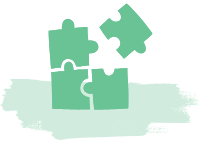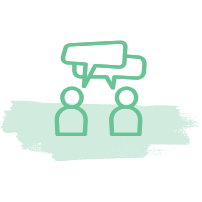Identifying & Reporting Sexual Abuse


Recognizing & Reporting Resources
Identifying and reporting child sexual abuse is crucial for ensuring a child’s immediate safety as well as long-term well-being. It provides access to essential medical, psychological, and social support, while reporting abuse fulfills our legal and moral responsibility as safe adults.
Learn the steps you can take to identify and report sexual abuse.
Identifying Abuse
Signs of abuse aren't always obvious, but they are often there
Signs that a child is being sexually abused are often present, but they can be indistinguishable from other signs of child stress, distress, or trauma. Knowing what to look for can help.
Emotional & Behavioral Signs
Physical Signs of Abuse
Emotional and behavioral signs or changes are more common than physical signs and can include:
- Anxiety and depression
- Sleep disturbances, including nightmares or night terrors
- Change in eating habits
- Unusual fear of certain people or places; reluctance to be alone with a certain person
- Changes in mood that could include anger, aggressiveness towards parents, siblings, friends, and pets
- Rebellion or withdrawal; runaway behavior
- Change in attitude towards school or academic performance; lack of interest in friends, sports, or other activities
- Unexplained or frequent health problems like headaches or stomach aches
- Poor self-esteem; avoidance of relationships
- Self-mutilation or change in body perception, like thinking of self or body as dirty or bad; suicidal thoughts
- Regression to previously outgrown behaviors, for example, bedwetting or thumb sucking
- Abnormal sexual behaviors or knowledge of advanced sexual language and behaviors
- Too “perfect” behavior or overly compliant behavior
Direct physical signs of sexual abuse are not common. However, when physical signs are present, they may include bruising, bleeding, redness and bumps, or scabs around the mouth, genital, or anus. Urinary tract infections, sexually transmitted diseases, and abnormal vaginal or penile discharge are also warning signs.
There are other indirect physical signs that include:
- Persistent or recurring pain during urination or bowel movements
- Wetting or soiling accidents unrelated to toilet training
- Sexually transmitted diseases
- Chronic stomach pain
- Headaches

Child sexual abuse victims often exhibit indirect physical signs such as chronic stomach pain and headaches.

How can you tell if an adult is taking too much interest in your child?
Child grooming is a deliberate process by which offenders gradually initiate and maintain sexual relationships with victims in secrecy. On the surface, grooming a child can look like a close relationship between the offending adult, the targeted child and (potentially) the child’s caregivers. By recognizing grooming behavior you can intervene. Below are some examples of red flag behaviors:
- Special attention/preference to a child
- Gift giving
- Touching or hugging the child
- Learn more about child grooming and see examples of red flag behaviors
- Sympathetic listener
- Offers to help the family
- Gaining access via the internet

Healthy Sexual Development
As children grow, they naturally become curious about their bodies and begin to explore what feels good and safe.

Immediate Consequences of Child Sexual Abuse
Immediate consequences often include physical trauma, emotional distress, confusion, fear, shame, and a profound impact on the child's mental health and sense of safety.

Long Term Consequences of Child Sexual Abuse
Long-term consequences can include lasting mental health issues such as depression, anxiety, PTSD, difficulties in forming relationships, and challenges with trust, self-esteem, and emotional regulation.
Reporting Abuse
Maybe you have a suspicion that a child is being abused based on something you’ve witnessed, or a child has told you that abuse is happening.
Either way, it’s your responsibility to report it to the authorities.
You do not need to have proof that abuse is occurring to make a report, only reasonable suspicion. Reasonable suspicion means that you have witnessed physical or behavioral signs of maltreatment, either in the child or parent/caregiver, or both. Or, you have received a disclosure from a child about abuse, neglect, or boundary violations towards them.
What are the laws about child sexual abuse?

Child Advocacy Centers (CAC)
CACs coordinate all the professionals (legal and social services) involved in a case. If you’re unsure about whether to make an official report or just need support, contact a child advocacy center. They will help you evaluate your suspicions. To find one near you, contact National Children’s Alliance at www.nca-online.org or 1-800-239-9950.

Child Abuse Helplines
Helplines have staff, specifically trained operators, to deal with questions about suspected child sexual abuse. Call the National Sexual Assault Hotline, 1-800-656-HOPE (4673) to be routed to resources in your own community, or call the ChildHelp USA National Child Abuse Hotline, 1-800-4-A-CHILD (800-422-4453).

Talk to the Child’s Parents
As long as they are not the abusers, you could provide educational materials to the parents, such as The 5 Steps to Protecting Our Children™ Guide. If the parent seems indifferent or unlikely to take action, call one of the other recommended sources.

